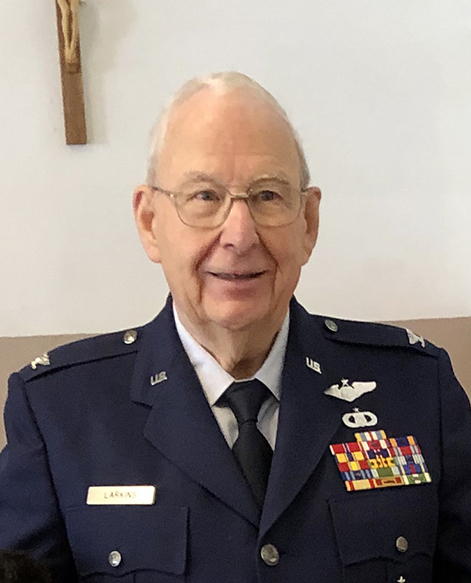By John Larkins
Jesus Christ was born as the Son of Man to redeem all human beings. We had been separated from God by the sin of Adam and Eve. God began His salvation plan about 4,000 years ago by announcing to Abram (thence re-named Abraham) that He would make of him a mighty nation.
After about 2,000 years, that plan shifted into high gear when God directed Moses to become the leader of this mighty nation and lead them to a phase of building His developmental church.
After another 2,000 years, this church had completed its job, and its members were to be converted to a “new and everlasting covenant” by a Savior, a Redeemer. This Church was man’s salvation, because Jesus Christ would be given (after His death and resurrection) the power to forgive sin and – as we came to know – establish a Church here on earth with the authority to dispense Jesus’s power, granted by His Father, to open access to Heaven.
Many Christians believe that Jesus stayed on earth for about 40 days after He rose from the dead on the day we celebrate as Easter Sunday. Now is about the time 2000 years ago when Peter and his bishops would be testing their collective understanding of Jesus’s teaching (“and now I send you as the Father sent me”) so they could respond to the Son of Man’s profound mission, which now was their responsibility. At this point, you might ask why they should not intensify their Bible study. Since God’s truth is revealed in the Bible, all they have to do is begin developing sermons, right?
Well, there is only one thing wrong with this plan. Peter and his bishops and other Catholics of that time had not yet written the Bible! They perhaps had access to the Old Testament, but it would have been written on expensive parchment scrolls. It was during this time that Jesus Christ’s Church met in the Jewish synagogues on Sundays after the Jews met on Saturday. Most likely those early Catholics referred to the Greek Septuagint. When the New Testament was finally written about 65 A.D., it included 300 references that were included in the Old Testament. Another 60 references were from the Hebrew language portions. When the Reformers changed the content of holy scriptures 1,500 years in the future, the Old Testament did not have the Septuagint included!
So, when we read Peter’s sermon in Acts 2, 14 -41, we are seeing him using his memory of events he saw and remembered from the Old Testament. Here is what rang their chimes:
“Therefore, let the whole house of Israel know for certain that God made Him both Lord and Messiah, this Jesus that you crucified!” The new church had not yet developed many procedures for bringing new converts into fellowship, but Peter was spot on for the basics: “repent and be baptized, every one of you, in the name of Jesus Christ, for the forgiveness of your sins; and you will receive the gift of the Holy Spirit.” Peter also warned them (as would be necessary today): “Save yourselves from this corrupt generation.” Those who accepted his message were baptized, and about 3,000 persons were added that day.
The Bible was and is the Holy Word of God and guides His Church. But the content of the Bible was completed with the death of the last Apostle, John, about the year 95. What revelation now? As Paul said in 1 Tim 3:14, “But if I tarry long, that thou may know how thou ought to behave thy self in the House of God, which is the Church of the living God, The Pillar and Ground of the Truth.”
Have you ever heard someone say, “Oh, we strive to live and believe what the earliest Christians did!” There is no better and more authentic testimony about these goals than the Acts of the Apostles.
John Larkins was born in Oklahoma to an U.S. Army family. His education was in the Catholic Church and teaching in the United Methodist Church for 10 years. After 50 years of various positions in federal service at home and in Vietnam, Saudi Arabia and Iraq, John and his wife Carol live in Gadsden. He may be contacted at johnlarkins@bellsouth.net.




